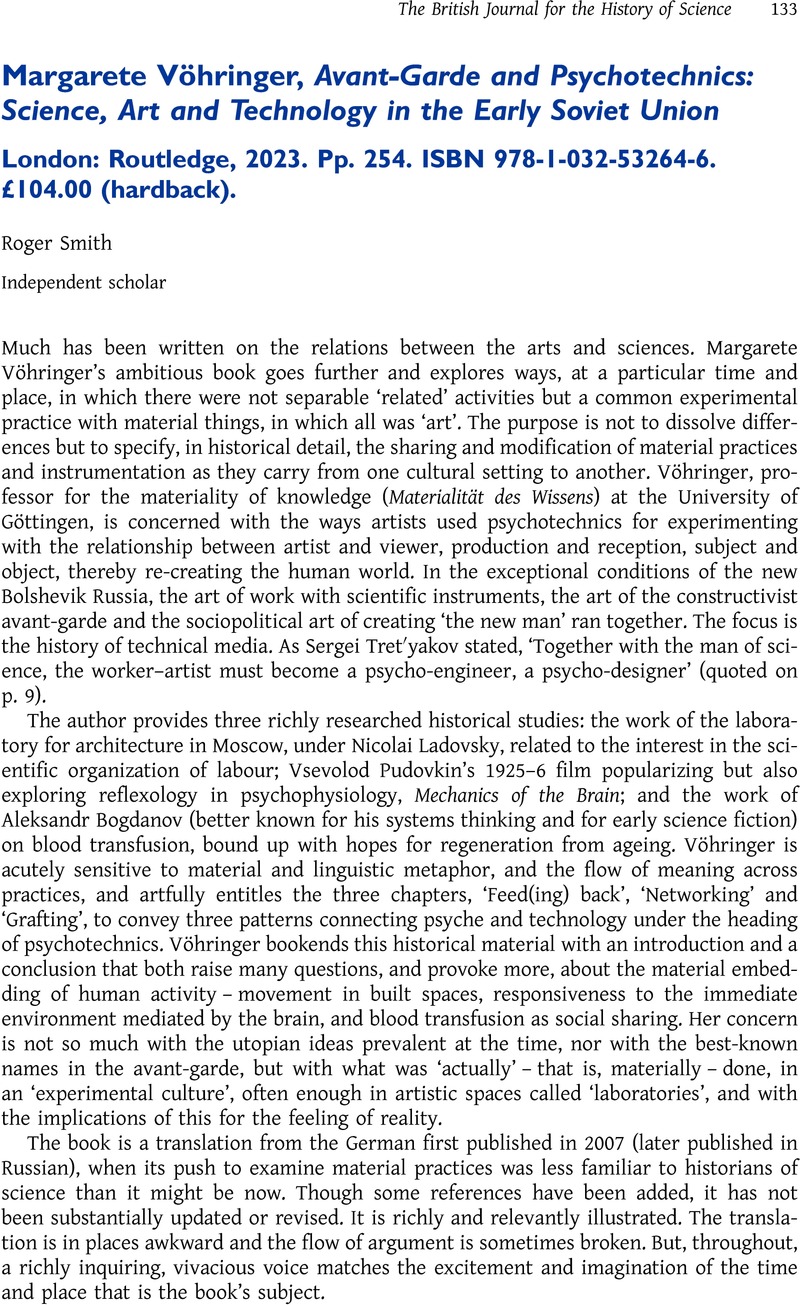No CrossRef data available.
Article contents
Margarete Vöhringer, Avant-Garde and Psychotechnics: Science, Art and Technology in the Early Soviet Union London: Routledge, 2023. Pp. 254. ISBN 978-1-032-53264-6. £104.00 (hardback).
Review products
Margarete Vöhringer, Avant-Garde and Psychotechnics: Science, Art and Technology in the Early Soviet Union London: Routledge, 2023. Pp. 254. ISBN 978-1-032-53264-6. £104.00 (hardback).
Published online by Cambridge University Press: 17 November 2023
Abstract
An abstract is not available for this content so a preview has been provided. Please use the Get access link above for information on how to access this content.

Information
- Type
- Book Review
- Information
- Copyright
- Copyright © The Author(s), 2023. Published by Cambridge University Press on behalf of British Society for the History of Science


